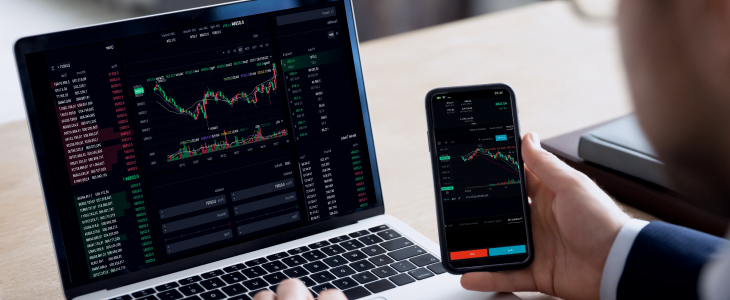
Understanding Forex Trading: A Comprehensive Guide
Forex trading, also known as foreign exchange trading or currency trading, is the global marketplace where currencies are exchanged. It is one of the largest and most liquid financial markets in the world, with a daily trading volume exceeding $6 trillion. In this guide, we will explore what Forex trading is, how it operates, the mechanisms behind it, its advantages, and tips for those looking to start their journey in this exciting arena. If you’re interested in learning more detailed strategies and tools, visit what is forex trading https://acev.io/.
What is Forex Trading?
Forex trading involves the buying and selling of currencies in pairs, such as EUR/USD (Euro/US Dollar) or GBP/JPY (British Pound/Japanese Yen). Unlike stocks or commodities, which are traded on centralized exchanges, the Forex market operates 24 hours a day through a network of financial institutions, brokerages, and individual traders. This decentralized structure allows traders to capitalize on price fluctuations in currency pairs at any time of the day or night.
How Forex Trading Works
The core of Forex trading revolves around currency pairs, where one currency is exchanged for another. Each pair has a base currency and a quote currency. The base currency is the first listed currency, while the quote currency is the second. For instance, in the pair EUR/USD, the Euro is the base currency, and the US Dollar is the quote currency.
Bid and Ask Prices
In Forex trading, two prices are always quoted: the bid and the ask price. The bid price is the amount a trader is willing to pay for the base currency, while the ask price is the amount a trader is willing to sell the base currency for. The difference between these two prices is known as the spread, which represents the broker’s profit from the trade.
Market Participants
The Forex market is made up of various participants, including:

- Banks and Financial Institutions: These entities are among the largest players in the Forex market, engaging in high-volume trading.
- Corporations: Companies involved in international trade use Forex to hedge against currency fluctuations.
- Traders and Investors: Retail traders use online platforms to speculate on currency price movements.
- Central Banks: Central banks may intervene in the Forex market to stabilize or influence their national currency’s value.
Advantages of Forex Trading
Forex trading presents several advantages compared to other financial markets:
- High Liquidity: The vast trading volume ensures that traders can easily enter and exit positions without significant price changes.
- 24-Hour Market: The continuous nature of the Forex market allows for greater flexibility in trading hours.
- Leverage: Brokers often offer leverage, allowing traders to control larger positions with a smaller amount of capital. While this can amplify profits, it also increases risk.
- Low Transaction Costs: Due to the high volume of trading, transaction costs (spreads) are generally lower compared to other markets.
- Diverse Trading Options: Traders can speculate on various currency pairs and market factors, such as interest rates, economic indicators, and geopolitical events.
Getting Started with Forex Trading
For those looking to embark on a journey in Forex trading, here are some essential steps to help you get started:
1. Educate Yourself
Understanding the fundamentals of Forex trading is crucial. Take time to learn about technical analysis, chart patterns, and economic indicators that influence currency prices.
2. Choose a Reputable Broker
Select a broker that suits your trading style and offers competitive spreads, a user-friendly trading platform, and strong customer support. Make sure they are regulated by a recognized authority.
3. Develop a Trading Strategy

Successful trading requires a well-defined strategy. You may choose to trade based on technical analysis, fundamental analysis, or a combination of both. Consider your risk tolerance and trading goals.
4. Open a Demo Account
Many brokers offer demo accounts that allow you to practice trading with virtual money. This is a valuable way to test your strategy and familiarize yourself with the trading platform without risking real capital.
5. Start Trading with Real Money
Once you feel confident, you can transition to live trading. Start with a small amount of capital to manage your risk effectively. Monitor your trades and keep a trading journal to analyze your performance.
Risks Associated with Forex Trading
While Forex trading offers many opportunities, it also comes with risks. Some of the key risks include:
- Leverage Risk: While leverage can magnify profits, it also magnifies losses, which can deplete your trading account quickly if not managed properly.
- Market Volatility: Currency prices can be highly volatile, influenced by a multitude of factors, including economic reports, political events, and market sentiment.
- Counterparty Risk: There may be a risk of your broker defaulting, which means you could potentially lose your funds. Always choose a regulated broker.
Conclusion
Forex trading is a dynamic and potentially profitable way to engage with the financial markets. However, success requires a solid understanding of the market, a well-defined strategy, and good risk management practices. By educating yourself and staying informed, you can navigate this complex world of currency trading. Remember, patience, discipline, and continuous learning are keys to success in Forex trading.
Whether you are a beginner or an experienced trader looking to refine your skills, understanding the principles of Forex trading is essential for your success in this global financial market.

